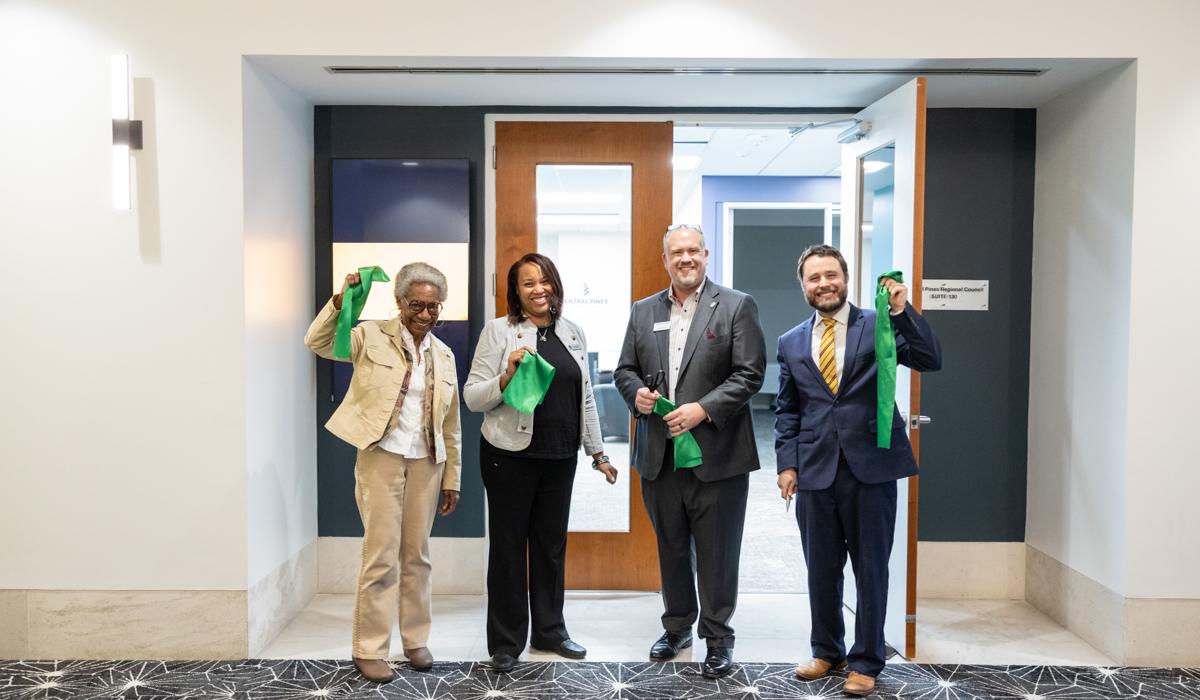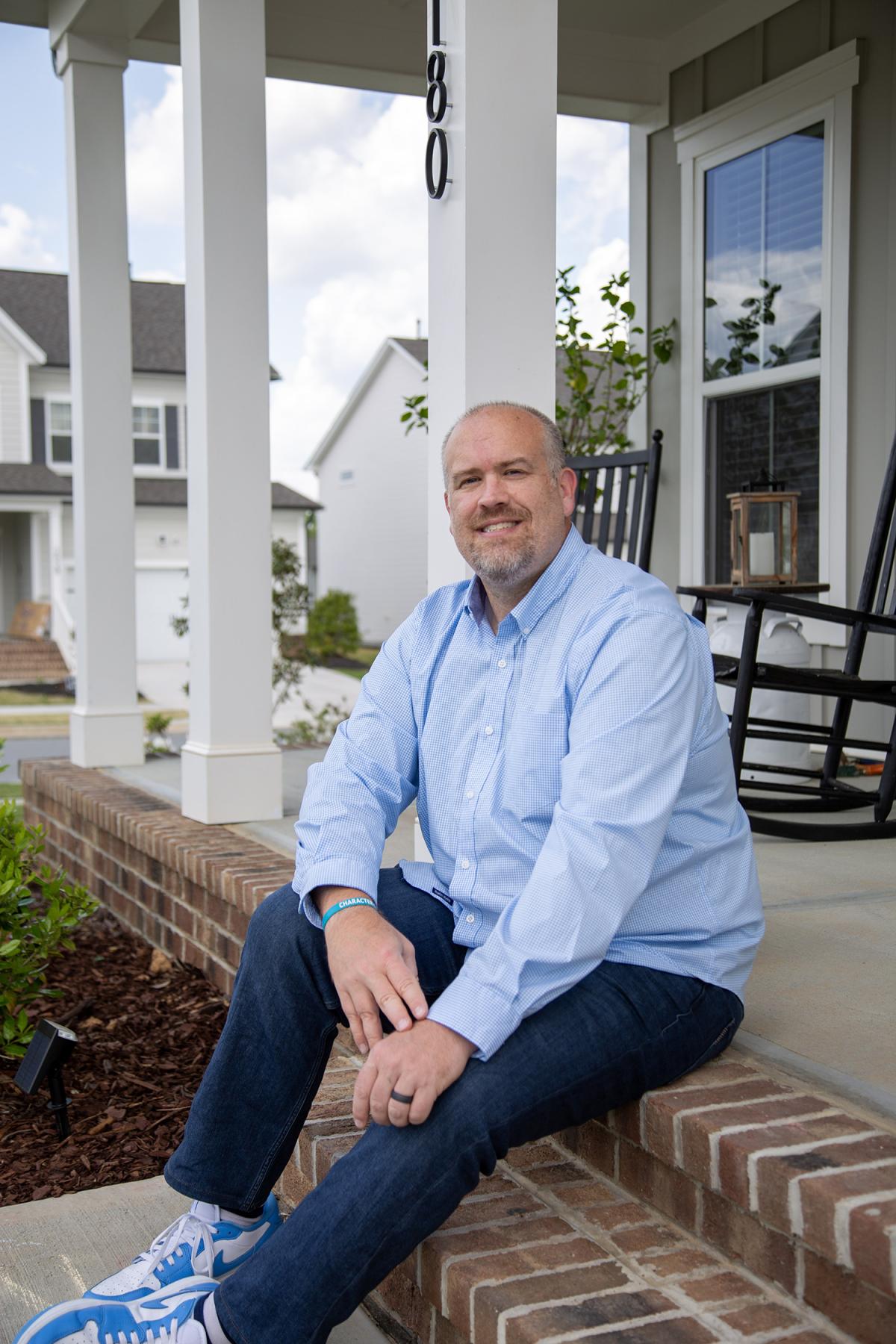
 Our fearless leader and Executive Director, Lee Worsley celebrates his 10 year anniversary with Central Pines Regional Council this month! At the time of his hiring, Jennifer Robinson, Town of Cary, was the Chair of the Board of Delegates and continues to serve on the Board today. Looking back on that experience, she shared, “We hired Lee with confidence that he would be able to help our COG improve its standing in the region. Most notably, he has succeeded in achieving our goal of uniting all governments within our region as members, expanding our value to both our members and our peer organizations, and securing a ‘seat at the table’ in key regional discussions. We are so thankful for Lee and what he has accomplished in ten years.” This sentiment has been echoed by other long-standing Board Members.
Our fearless leader and Executive Director, Lee Worsley celebrates his 10 year anniversary with Central Pines Regional Council this month! At the time of his hiring, Jennifer Robinson, Town of Cary, was the Chair of the Board of Delegates and continues to serve on the Board today. Looking back on that experience, she shared, “We hired Lee with confidence that he would be able to help our COG improve its standing in the region. Most notably, he has succeeded in achieving our goal of uniting all governments within our region as members, expanding our value to both our members and our peer organizations, and securing a ‘seat at the table’ in key regional discussions. We are so thankful for Lee and what he has accomplished in ten years.” This sentiment has been echoed by other long-standing Board Members.
We asked Lee to reflect on his time here and share a few things he's learned over the past 10 years.
Q: This month, you are reaching the milestone of ten years as Executive Director of Central Pines Regional Council. What has been your biggest lesson about being a regional leader and the skill of regional leadership? How does this look different from your previous role in county leadership?
A: I think there are a lot of similarities. You are dealing with people and relationships when you are in a leadership position. I have found that building trust, following through, and listening are essential in both county and regional roles.
One big difference is that regional councils, in North Carolina, are voluntarily membership organizations rather than a County where a person receives services under state law. As a voluntary entity, demonstrating value and working with local governments to meet them where they are is essential and can also present one of the most difficult operational challenges.
Fifty local government members across seven counties ranging from 200 residents to over 1 million residents mean lots of different needs across a very broad geography. We try to serve everyone, but what we do for one local government can look a lot different from the other. At the same time being part of the regional council is also about making sure that the collective voices of our local governments are heard, and we work regionally to advance everyone. Sometimes that is hard because we are asked “tell me what we get back for what we pay.” That is an understandable sentiment, but being part of a regional council is not always transactional. It's about improving the region, which indirectly impacts our local government. Value can be measured in several different ways.
Q: A lot has changed about Central Pines Regional Council since you began in 2015. If you had to choose, what would you say is your proudest accomplishment?
A: When I had the honor of being appointed Executive Director, Triangle J COG Chair Jennifer Robinson and members of the Board made it clear that we had to serve our local government members more effectively. At the time Triangle J had thirty-seven (37) out of fifty-one (51) local governments as members. Through lots of hard work by our outstanding staff and unwavering support from the Board, Central Pines Regional Council is only one (1) local government short of 100% membership. Our increase in membership of 35% has meant that we have been able to increase our capacity and be more effective for all our local governments by having more voices at the table.
Q: As many of our staff and partners know, you are a native of our region – born and raised in Raleigh! It is said that the greater region adds 145 new residents each day. What is your number one piece of advice to these newcomers looking to shape the future of our area?
A: I would ask someone coming to the region to take the time to discover how unique and wonderful our region is. And that means seeing the variety of urban and rural communities that make up our region.
As an example, if you moved to Raleigh, take time to visit smaller communities outside Wake County. If you moved to Lee or Moore County, go to Downtown Durham or Raleigh for an evening. Our region has so much to offer.
Learn about the region and how we have grown the way we have. Learn about why RTP was established and the critical role our universities played in the region’s success, study how having Raleigh as the State Capital has helped shape the region; go explore Durham’s historic Black Wall Street and the Eno River State Park; head down US 1 to the golf capital of the United States in Moore County.
Understand that our region is not just one county or one city. That is not how our region developed, and the mixture of counties and municipalities is one of our largest differentiators and competitive advantages. Appreciate how the geographic center of our region is not an urban area, but it's a world class research park (RTP), a world class airport (RDU International) and an outstanding state park (Umstead). Our region is one of a kind.
Once you’ve learned, it’s time to get engaged… not just in issues that impact your community but on issues that shape how our entire region interacts and develops. The success of our smaller more rural areas is critical to the success of the region and conversely continued growth in our more urban areas helps fuel our region’s economy.
You also must go see a Canes game, choose a college loyalty and attend the State Fair and have some fried dough 😊
Q: Looking ahead, what do you think is the biggest need in our region? What is your biggest priority for CPRC in the next five years?
A: According to all projections, our region will continue to grow significantly over the next 5 years. In just the last few months significant announcements like the NC Children’s Hospital in Apex, an “RTP like” economic development initiative in Sanford/Lee County, and continued rapid growth north into Franklin County means that the growth and need for coordination extends far beyond the historical “Raleigh-Durham-Chapel Hill” context.
In 1969, our organization, then the Research Triangle Regional Planning Commission, helped lead an effort to project and help set the course for coordinated growth across the region.
As we push toward a region of 4 million people in the next 30 years, a new planning effort for our growing region is needed once again. We will be working diligently on our Connected Region effort to help coordinate continued success for our region in the next several decades.
Q: Last, but not least, you are a connoisseur of coffee shops in our region. Can you recommend a great coffee spot in each of our seven counties that you have discovered traveling to our communities?
A: Wow. That is probably the most difficult question of them all. There are so many great places across the region to pick just one. I will say that places like the Roast Office in Pinehurst, Piranha Joes in New Hill, the Raleigh Times in Raleigh, Milltown Java in Princeton and Havoc Brewing in Pittsboro are a few of the places I have been to recently.